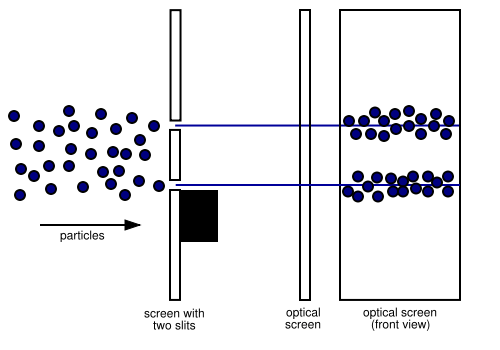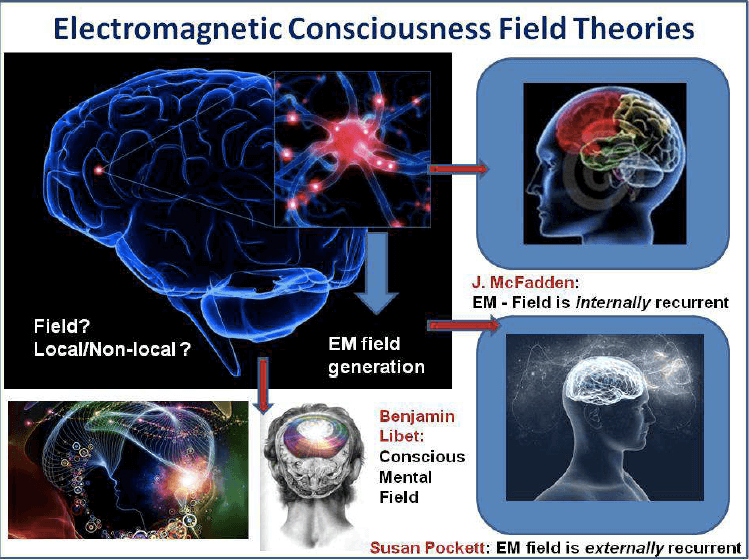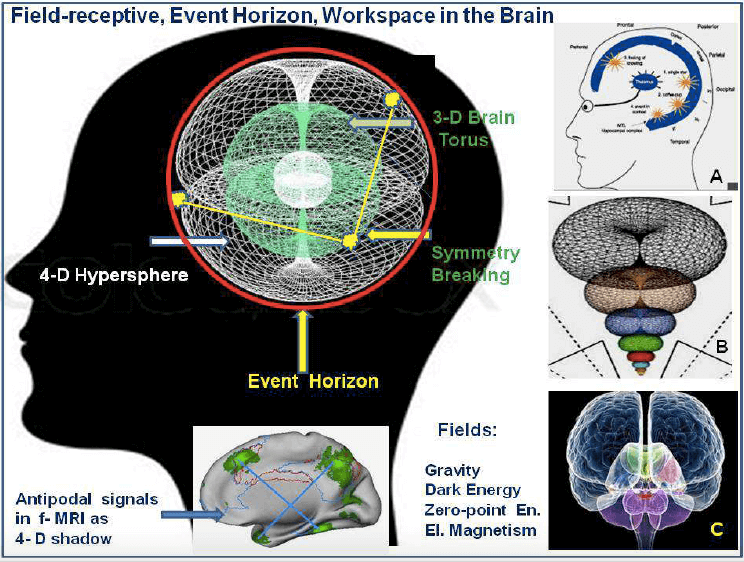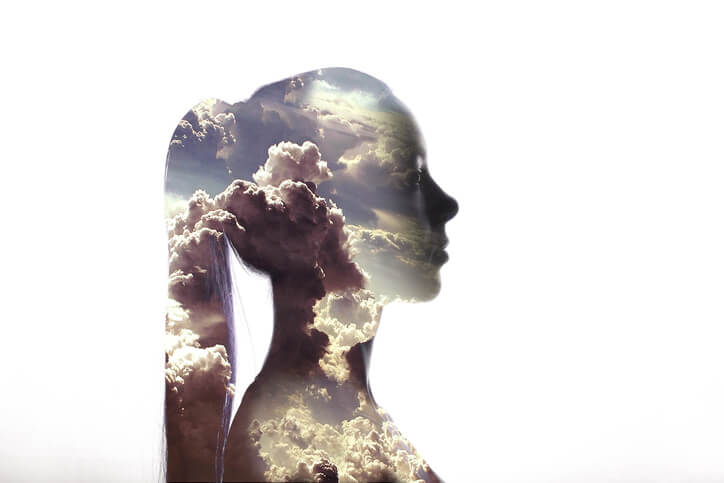Consciousness is entangled with the human origin story. Today it’s a topic that puzzles scientists and has for as long as we’ve been able to think about it. Why are we conscious? Are humans the only ones able to experience true consciousness? Where does consciousness come from?
The questions leave your head hurting.
Modern neuroscience attempts to break down the parts of the human brain in search of answers. However, after decades of mapping the functional parts of the brain, the answers have not been found.
Ancient philosophy employed a broader explanation of consciousness. Today, cutting edge research into consciousness is helping to use similar perspectives as they were used throughout human history.
The field of physics is grappling with a similar problem. While attempting to explain the nature of the universe. Our current models do not unify the laws of the greater universe to that of tiny or quantum particles.
Could consciousness help unify both neuroscience and physics?
In this article, we’ll explore the origin of consciousness and its overlap with the field of quantum physics.
What is consciousness?
In short, there’s no answer to this question. Definitions of the conscious mind have not been agreed upon. Ancient definitions discuss consciousness being connected to the nature of the universe. The idea makes our mind a very big problem to solve.
At basic levels, we could say consciousness is explaining how we experience the world. For example, why do senses from the world acquire characters such as color and tastes? Beyond these, human consciousness is characterized by complex traits like awareness, free will, and reflection.
One explanation is that the human brain acts between the communication of micro units, and higher organized areas.
Is the mind more than the brain?
There are generally two sides of belief in the definition of consciousness.
One is very simplistic. It describes it as the result of a product of electric signals in your brain.
The second has a grander view that consciousness exists on planes of matter beyond our human senses.
The ancient Indian Upanishads writings describe consciousness to be the essence of Ātman. It is a primal, innate self that is ultimately identified with Brāhman. A pure, transcendental, subject-object-less consciousness that underlies and provides the ground of being of both man and nature.
In more classical Western tradition, Plato and Descartes used the concept of ‘duality.’ The idea is that ‘substance duality’ exists in a bimodal of the universe. It separates the two fundamental kinds of matter into the material substances, and the separate consciousness substances.
These ideas are the basis of the idea of the ‘soul’ or ‘spirit.’ The issue is that in the time since, science has moved away from abstract ideas in search of simple hard evidence.
In the 20th century, “property dualists” explained a special kind of property is itself non-physical. They described it as ‘emerging’ from physical systems such as the brain once they attain a certain level of complexity.
As neuroscience discovered how complex the human brain was, a pure materialism approach became its logical conclusion. The “reductionists,” such as Crick and Dennett argued in the 90s that consciousness was nothing more than a state or function of the brain.
Can consciousness be measured?
As the brain was mapped, and its capabilities discovered, consciousness appeared to be solved.
The human nervous system is a network of billions of neurons. It’s so complex that it’s hard for us to even to imagine. Once science could map the functional parts of the brain it was assumed that consciousness would be the next to be explained.
These ideas used were used alongside those of human evolution and the vast expanse of the human brain. Could consciousness be a bi-product of our large brains?
However, as the brain parts were mapped out and discovered, the sum appears to be more than the parts themselves.
The philosophical camp holds far more expansive concepts such as ‘meta’ consciousness. They describe consciousness or the ‘higher mind’ existing as a sphere or domain. It is beyond our three-dimensional world, which our senses live in.
It relates to the idea of a material universe and a non-material universe. Consciousness seems to be an energy or movement of particles, that transfers between these two existences.
You could think about it as a TV transmitter. You sit in your lounge room and watch your screen, but the transmission, such as thoughts, feelings, and memories are broadcast from the TV station.
Some suggest the origin of consciousness occurs before birth, and the brain ‘plugs’ into messages received from a network of thoughts.
It’s a network that may extend beyond our planet and throughout into the universe.
Which part of the brain controls consciousness?
The complexity of the human brain has been used to explain the conscious mind. When you break it down, there is some evidence to support that consciousness is a function of complexity.
As the evolution of nervous systems on planet earth progressed, the complexity of the brain increased. One problem is that we know that non-human creatures experience consciousness. However, humans are argued to be operating at a higher level of consciousness.
Higher brain function then, it’s assumed, relates to the bigger brains.
The human brain is incredibly fast, faster than any organ on earth. It also has the ability to store more information than current supercomputer technology.
Neuroscientists break down this function to the smallest unit of the brain, the neuron. Like a small electrical transmitter, it emits and communicates electric signals in the vast neural network.
A reductionist approach needs to find this “minimal” unit. A neuron itself is incapable of experiencing consciousness. The brain as a whole could be considered a minimal unit. But the ‘seat of consciousness’ could be broken down further.
Functional areas of the brain and consciousness
The human brain is separated into functional areas.
Take the spinal cord as a example. It’s made up of the nervous tissue inside the backbone with about a billion nerve cells. If the spinal cord is severed by trauma to the neck region, victims are paralyzed in the legs, arms, and torso. They are unable to control their bowel and bladder, and without bodily sensations.
Tetraplegics continue to experience life in all its variety—they see, hear, smell, feel emotions and remember as much as before the incident.
Higher in the brain is the cerebellum. It houses 69 billion neurons with four times more neurons than the rest of the brain combined. It also the brain’s most complex neurons, called Purkinje cells. They spread like a sea fan coral and conduct electrical dynamics.
What happens to consciousness if parts of the cerebellum are cut? Nothing much. Cerebellar patients experience the loss of movements, like the fluidity of piano playing or keyboard typing. They never lose any aspect of their consciousness.
The cerebellum is almost exclusively a feed-forward circuit: one set of neurons feeds the next, which in turn influences a third set. There are no complex feedback loops that reverberate with electrical activity passing back and forth.
The cerebral cortex & claustrum
The cerebrum is the highest center of the brain. It’s the home of the gray matter or folded outer surface of the brain. You can think of it as a laminated sheet of a maze of nervous tissue, the size, and width of a 14-inch pizza.
Functional areas of the cerebral cortex conduct a symphony of human behavior. The frontal cortex, for example, performs higher mental processes such as thinking, decision making, and planning.
Highly developed in humans, the frontal lobe is also where our personality is formed. It’s where we can carry out higher mental processes such as planning. Also, the frontal lobe is necessary for speaking fluently and with meaning.
Damage to the frontal lobe can result in loss of memory, morality, intelligence, language, and empathetic reasoning. All properties of consciousness, however, you would not classify a frontal lobe damaged patient as unconscious.
Deeper in the brain is an area called the claustrum.
This area integrates information across different parts of the brain like a conductor of a symphony. When electrically stimulated, patients are immediately unconscious. It operates like an on, off switch, but is it merely the bridge by which the parts the brain communicate.
On its own, the claustrum cannot generate consciousness.
What makes someone conscious?
Broader theories use whole functions of the brain to explain consciousness.
- The integrated information theory, explains the collation of a great amount of information into the brain. These include sense and thought based information that combine to equate to consciousness.
- Global workspace theory says that consciousness is the act of broadcasting information around the brain from a memory bank.
Both explain some aspects of consciousness and do describe functions closer to the frontal lobe in humans. They are yet to be proven.
One issue has been the measurement of unconscious decision making. Experiments have demonstrated that a decision to move a hand produces an electrical stimulation occurs before the decision to move has occurred.
Where does this electrical stimulation come from?
Quantum physics & the human brain
“The Moon does not exist only when we look at it!” – Albert Einstein
The world of physics is grappling a similar problem to neuroscience. Einstein blew classical explanations of the world made by Isaac Newton in the 21st century. Relativity showed there was much more to physical matter we can see and touch.
Since then, quantum mechanics has shown that things are even more complex. As you zoom in closer to matter, we find sub-atomic particles don’t behave in ways that Einstein predicted. It leaves a gap between relativity and the tiny world of quantum mechanics.
Roger Penrose describes this problem as one that relates to the origin of consciousness. “As our knowledge of the physical world changes,” he says “The answer to consciousness may lie in a deeper knowledge of quantum mechanics.”
Quantum physics describes matter as existing in waves or energy. They can also be in two places at once. While neuroscientists look directly to the physical brain to create consciousness, quantum mechanics says it may exist without the brain.
Could the origin of consciousness, exist before the formation of the brain? It could then also then live after the death of the brain.
These ideas move into an uncomfortable subject matter for scientists. The very nature of science is observing and measuring the real physical world.
Some researchers have suggested that objectivity is an illusion and that consciousness may even have an active role in quantum theory.
Schrodinger’s Cat & the dual universe
Erwin Schrodinger was a Nobel Prize winning Austrian physicist. He is famous for ‘Schrodinger’s Cat’ thought experiment. It was a created scenario where a cat is placed with an atom that can kill it in a box. Until the user observes the cat and the radioactive atom, the cat exists in both states of being dead or alive.
Matter in its smallest form, or quanta, is now known to behave in these ways. The tiniest particles can exist in different forms at any one point in time.
In Schrodinger’s case, it’s the conscious observer that changes the outcome. Is it in fact that consciousness takes part in the process of changing the quantum universe, and hence the physical world?
In the 1920s, physicist Pascual Jordan said “observations not only disturb what has to be measured, they produce it… We compel a quantum particle to assume a definite position.” The observer produces the results of the experiment.
Quantum physics begins to entwine the origin of consciousness with ourselves. It suggests that instead of consciousness computing the physical world, perhaps the physical world is relaying consciousness.
The double-slit experiment
Experiments have since proven quantum mechanics is connected to consciousness.
Scientists measure the behavior of tiny particles like electrons. According to quantum physics, these particles don’t behave like physical objects, but energy waves.
First performed in with light 1801, in 1927 the double slit experiment was performed with electrons. They passed a stream of electrons through two slits. The electrons undergo diffraction when passed through the slit, known as an interference pattern. The screen records how they pass through at this pattern.

The double-slit experiment recording electron patterns on a recording screen.
When the particles are sent through the slits one by one, the screen records them arriving one by one. The pattern is seen over time also reveals an interference band as if they are passed through two slits. What occurs is that each particle is seen to pass through BOTH slits.
So next, scientists placed a detector or observer behind one slit. It tells us whether any given particle goes through it or note.
In this case, the interference vanishes, and we have one real-world outcome.
By having a conscious observer seeing the path, the outcome is changed.
Consciousness alters particles in the real world in a measurable way.
Does that mean that a unifying theory of physics between quantum and relativity could be consciousness itself?
The quantum mind & consciousness
Can we bridge neuroscience and quantum physics? The brain could be regarded as an instrument we use to access quantum dimensions that extend beyond physical matter.
With this meaning, the brain would operate at the laws of quantum mechanics.
Two of these include:
Quantum entanglement: where particles are measured to be connected over vast distances. When actions are performed on one of the particles, simultaneous changes are observed on the other, even remotely.
Quantum tunneling: shows how small particles can tunnel through a barrier it shouldn’t be able to according to classical physics.

New models of consciousness based on electromagnetic fields that may explaithe n binding of distant brain nuclei. Source
Dr. Dirk Meijer has put forward the theory that the brain takes data or information from another dimension. He suggests a fourth dimension (not time), but one that cannot be observed by our regular senses. It is a concept of space-time that includes a fourth spatial dimension (with a 4+1 space-time structure).
The structure could solve the mismatch between traditional and quantum physics.
Here, the quantum mind creates a torus field around the head. It operates in the 4th dimension or hypersphere. The torus shape propels wave information from the surrounding quantum field into the neural network of the brain.
The shape allows energy to travel in and out of the neural network of the brain in multiple ways. Information flows in multi-directions and from flux from sub-atomic particles. These processes act with the second flow or flux in the brain, where non-physical quantum entanglement interacts with the field around the brain. That is the brain thinks inside and outside itself.
Penrose and Dr. Stuart Hameroff have described quantum vibrations within the brain’s neurons. They call the interaction ‘orchestrated objective reduction.’ These may be the mechanism by which the brain is connected into a wider network of the quantum universe.
The brain as a quantum antenna

Double-toroidal field integrating the 4D hypersphere workspace projecting the individual information as an internal model of the self. Source
The quantum mind may even act as a universal matrix of consciousness. Alongside multi-dimensional theories of quantum physics such as string theory, suggests there are up to eleven dimensions. Matter, it states, exists in string like states bound in tiny extra dimensions.
The Torus or double flow of energy helps generate information of self-consciousness as well as a wider network. These may be travel in and between the seven dimensions defined by string theory that are ‘bundled’ up so that we can’t see them.
It could explain why “remembering” of the future has been recorded. Experiments show that people can recall events that have not happened yet. Is this the brain acting in a universal information or energy field and recalling it in its physical form where it has not yet occurred.
Conclusion
Modern neuroscience has so far failed to discover a part of the brain to explain human consciousness.
While science broadly attempts a reductionist method, consciousness may need to be explained through a wider view.
Quantum physics is explaining the universe in its smallest elements. These particles don’t behave in the way we observe the world. The human brain must also operate under these rules. Experiments in quantum physics show consciousness itself changes the outcome of quantum particles.
Could consciousness bridge the unifying theory of physics and explain the physical world? Future studies may reveal how laws of quantum mechanics explain the brain. A fourth dimension, or non-visible model that our brain operates within, may reveal that there is common ground within these fields.
These directions align with string theories of physics. They also align more closely to ancient human interpretations of consciousness. Ancients described a universal network of energy and particles that our conscious mind exists in.
The origin of consciousness could occur before birth and creation of the brain. Within the undiscovered dimensions of the universe.
Now it’s up to you. Where does consciousness and the quantum mind leave our definitions of the world and human origins?
Leave your thoughts in the comment section below.
Further reading:
- https://www.neuroquantology.com/index.php/journal/article/view/1079/852
- https://www.ncbi.nlm.nih.gov/pmc/articles/PMC4232337/
- https://www.ncbi.nlm.nih.gov/pubmed/16186012
- https://www.ncbi.nlm.nih.gov/pmc/articles/PMC4387509/


























